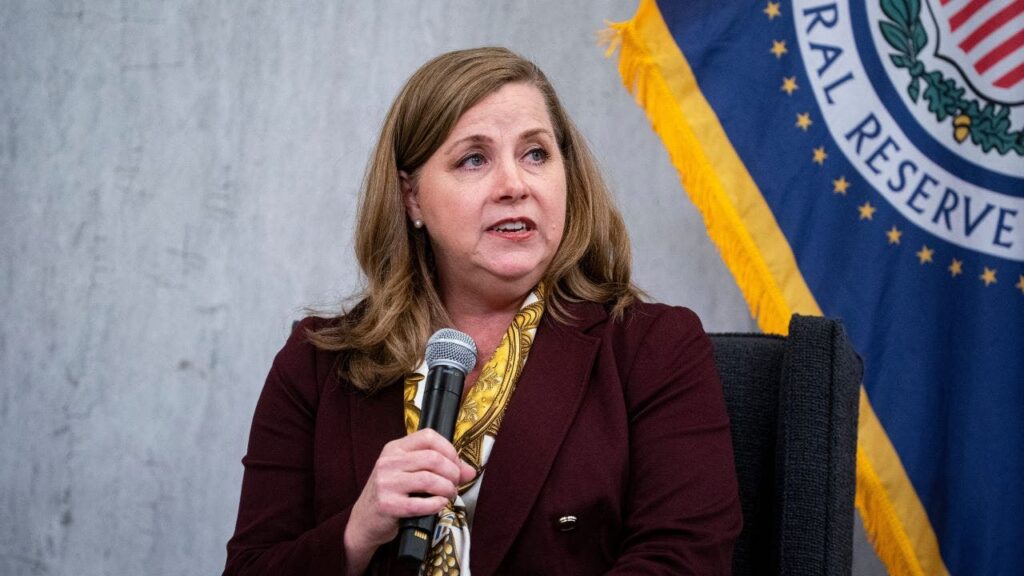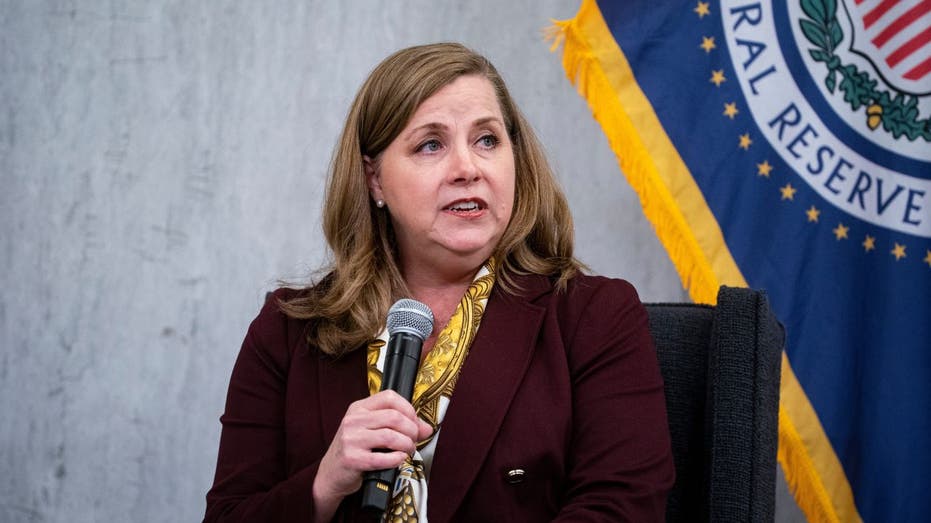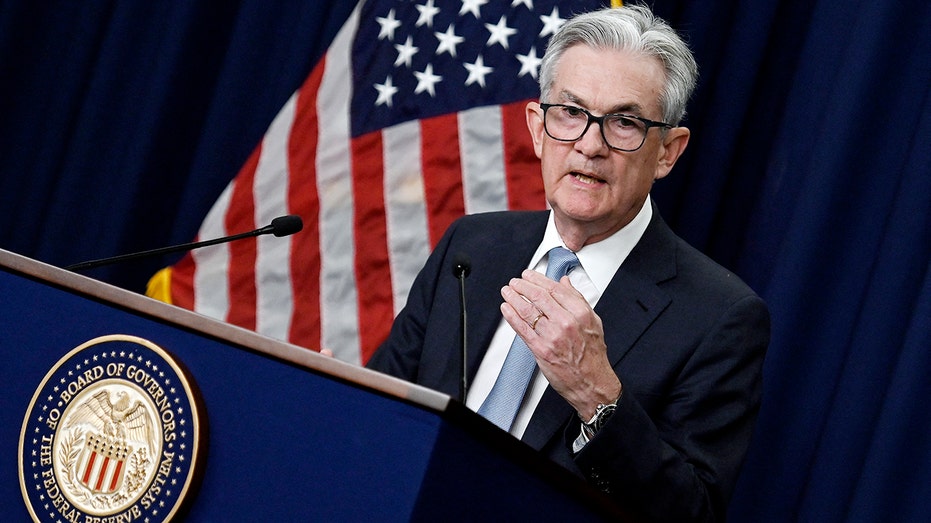
Empower chief investment strategist Marta Norton and State Street investment strategist Michael Arone discuss potential rate cuts, inflation, tariffs and more on The Claman Countdown.
Federal Reserve Governor Michelle Bowman said in a speech over the weekend that she still sees three interest rate cuts this year after the Fed’s monetary policy panel left rates unchanged at their meeting in late July.
Bowman, who serves as the Fed’s vice chair for supervision, spoke Saturday at the Kansas Bankers Association 2025 CEO and Senior Management Summit in Colorado Springs, Colorado, where she reemphasized why she dissented from the Fed’s last interest rate decision last month and favored a rate cut.
Bowman and her colleague, Fed Governor Christopher Waller, each dissented from the Federal Open Market Committee (FOMC) decision to leave the central bank’s benchmark federal funds rate at a range of 4.25% to 4.5%.
It marked the first dissent by two FOMC members in favor of a rate cut since 1993.
Bowman explained that at the June FOMC meeting and in a subsequent speech she was laying out her reasoning for a July cut based on her assessment “of signs of fragility in labor market conditions,” adding that, “economic conditions appeared to be shifting, and as a result, we should reflect this shift in our policy decisions.”
IN A DISSENT NOT SEEN IN THREE DECADES, TWO FED GOVERNORS WANTED TO CUT INTEREST RATES AND HERE IS WHY

Federal Reserve Governor Michelle Bowman said she still projects there will be three interest rate cuts in 2025. (Al Drago/Bloomberg via Getty Images / Getty Images)
“Inflation has moved considerably closer to our target, after excluding temporary effects of tariffs, and the labor market has remained near full employment,” Bowman explained. “Taking action at last week’s meeting would have proactively hedged against the risk of a further erosion in labor market conditions and a further weakening in economic activity,” she added.
The July jobs report was weaker than expected with 73,000 jobs added – well below the 110,000 estimate of LSEG economists – and also revised employment in May and June downward by 258,000 jobs. Bowman noted that despite the signs of weakness in the labor market, the labor market “appears to remain near estimates of full employment.”
FED OFFICIAL CALLS JULY JOBS REPORT ‘CONCERNING’ AS ECONOMY HITS POTENTIAL TURNING POINT

The Federal Reserve holds its next monetary policy meeting in mid-September, when rate cuts will be under consideration. (Samuel Corum/Bloomberg via Getty Images / Getty Images)
Bowman said that the monthly labor market data “have become increasingly difficult to interpret, in part, reflecting declining survey response rates and the changing dynamics of immigration and net business creation.”
“It is crucial that U.S. official data accurately capture cyclical or structural changes in the labor market in real time so that we can confidently rely on these data for monetary and economic policymaking,” she wrote.
“So, I remain cautious about taking too much signal from data releases, but I see the latest news on economic growth, the labor market, and inflation as consistent with greater risks to the employment side of our dual mandate.”
BESSENT SAYS MARKET EXPECTS FED TO CUT RATES THIS YEAR: ‘SUBSTANTIAL PROBABILITY’

Federal Reserve Chair Jerome Powell cited the possibility of tariffs causing persistent inflation as a reason the Fed left rates unchanged at its last meeting. (Photo by OLIVIER DOULIERY/AFP via Getty Images / Getty Images)
Bowman explained that she continues to project three interest rate cuts before the end of 2025 as she has projected since last December, implying three 25-basis-point cuts at upcoming FOMC meetings. However, she emphasized that monetary policy isn’t on a predetermined path and could evolve as economic conditions change.
GET FOX BUSINESS ON THE GO BY CLICKING HERE
Bowman also said that ahead of the next FOMC meeting in mid-September, Fed policymakers will get two inflation reports and another employment report to give them more economic data to consider.
“A proactive approach in moving policy closer to neutral, from its current moderately restrictive stance, would help avoid a further unnecessary erosion in labor market conditions and reduce the chance that the Committee will need to implement a larger policy correction should the labor market deteriorate further,” Bowman said.
 Latest World Breaking News Online News Portal
Latest World Breaking News Online News Portal






